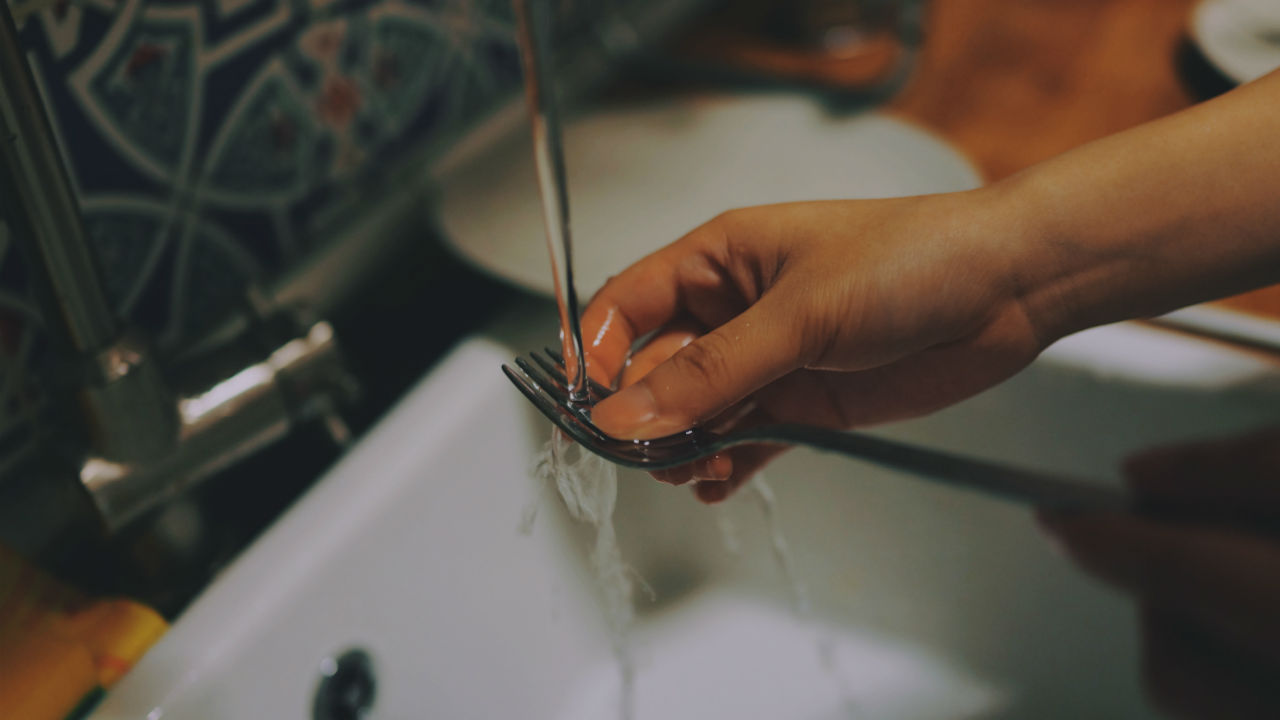 Via Unsplash
Via Unsplash
We can’t see them but they are there. Germs are waiting to be passed from surfaces to our hands to our eyes, our noses and our mouths. Pretty unsavory thought, but keeping on top of cleaning those surfaces where germs lurk will hopefully help keep you and your family from becoming sick.
Different germs are thought to live varying amounts of time.
A recent study from the State University of New York at Buffalo showed that bacteria can persist for weeks or months on certain surfaces due to the formation of biofilms that make them more resistant to general cleaning than other forms of bacteria.
In an attempt to take a stand against bacteria, make sure you pay attention to the following everyday surfaces.
1) Kitchen sink, drain and faucet screen
Our sinks and drains often look clean after we have rinsed down food or the like. But actually they are hidden sources of tons of bacteria from every fork, dish or fruit we have rinsed in them. Make sure you scrub out the sink with a disinfectant and wipe around the drain every couple of days.
Microbiologist Kelly Reynolds explained in Prevention that bacteria can build up on the metal screen in the faucet where the water comes out. A biofilm may form there that can break off and get onto our plates or food.
She suggests soaking the screen once a week in dilute bleach solution and let the water run after you replace it.
2) Water faucet handles
We don’t think much about what is left on the faucet handle after we reach for it to wash our hands. Or where the hands of the person who turned on the faucet before us have been. Faucets should be wiped down with a disinfectant at least once a week.
3) Towels and sponges
Many of us like to use kitchen towels to avoid overusing paper ones but unbeknownst to us, those kitchen towels may harbor fecal bacteria that can be harmful.
A study reported by Food Protection Trends tested 82 hand towels collected from cities across the United States. They found that “coliform bacteria were detected in 89.0% and E. coli in 25.6%” of the towels, though the E. coli count depended on how often the towels were washed.
It is recommended that kitchen towels be soaked in a weak bleach solution for two minutes every couple of days before washing in detergent. Detergent alone did not kill enough bacteria, even when the towels were washed frequently, particularly if they were not totally dried before use.
Sponges are another kitchen item that can harbor over 100,000 bacteria in each square, reported Huffington Post. To keep sponges clean, zap them in the microwave for a minute or put them in the dishwasher and don’t re-use them until they dry.
4) Power buttons
Our lives are full of smart buttons, be they on microwaves, phones, computer keyboards or TV remotes. There are so many nooks and crannies that hold bacteria on their surfaces, particularly since these are objects we use every day.
Make a point of wiping the power buttons on the products you regularly use with a disinfectant solution a few times a week.
5) Vacuum cleaners
We use our vacuums to suck up all the dirt and debris in our carpet so those germs are now sitting inside the container, in the brushes, and on the surface of the machine.
"Vacuums—including the brushes and bags—are like meals-on-wheels for bacteria," Charles Gerba, PhD, professor of environmental biology at the University of Arizona said, as reported by Prevention.
Gerba and his team of researchers did a study on bacteria in vacuum cleaner brushes and found that 13 percent tested positive for E. coli. That means you are spreading that bacteria around every room you vacuum.
It is suggested that you change your vacuum bag long before it becomes full outside to keep the bacteria you removed out of your house. Choose a bag with an antibacterial lining if you can.
If you use a bagless vacuum, periodically wash the container with a weak bleach solution and let it dry completely before using.
Michele is an R.N. freelance writer with a special interest in women’s health care and quality of care issues.
Edited by Jody Smith
1) How Long Can Germs Live? Huffington Post.ca. Retrieved October 3, 2016.
http://www.huffingtonpost.ca/2013/12/27/how-long-can-germs-live_n_4509419.html
2) 10 Worst Germ Hot Spots You Touch Every Day. Prevention. Com. Retrieved October 3, 2016.
http://www.prevention.com/health/health-concerns/top-10-places-germs-can-make-you-sick
3) Gerba, Charles P. et al. Bacterial Occurrence in Kitchen Hand Towels. Food Protection Trends September/October Vol. 34 No. 5 pages 312-317. Foodprotection.org. Retrieved October 3, 2016.
http://www.foodprotection.org/files/food-protection-trends/Sep-Oct-14-Gerba.pdf




Add a CommentComments
There are no comments yet. Be the first one and get the conversation started!